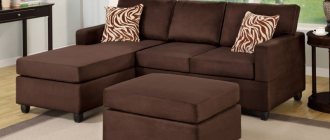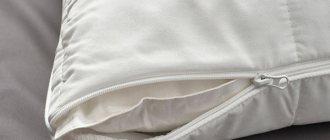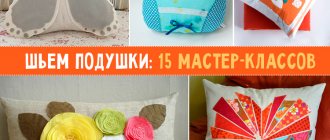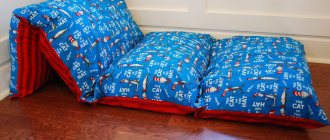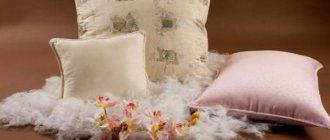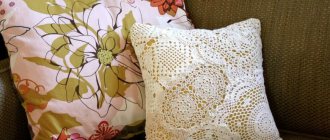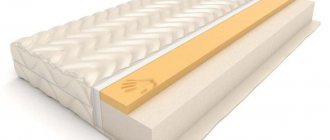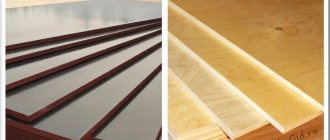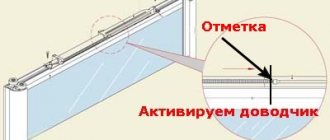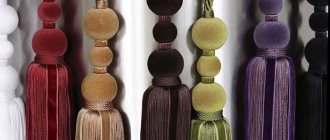It is difficult to find a person’s home that does not have at least one pillow. This bedding has long been used not only for its intended purpose, but also for interior decoration. Sofa cushions, made of decorative materials in the form of squares, triangles and bolsters, create a relaxed atmosphere, make the home cozy and relaxation comfortable.
Don’t despair if the store doesn’t have a pillow of the right color and size. This textile product can be made by hand. The main thing is to choose a high-quality filler and carefully, following the advice of professionals, carry out the work.
What are decorative pillows for?
The role of decorative pillows in interior design is much more diverse than it seems at first glance. It lies not only in conveying special aesthetics, but also in practical functionality, which makes the house more comfortable and convenient for living.
- Products in the right color make a room warmer and more inviting, adorned with a fashionable print or pattern make it more current, and those that match the style make it more sophisticated.
- Scandinavian-style products can add a festive touch during the Christmas season.
- A handmade model makes a wonderful gift for a loved one.
- Often, funny shaped stuffing turns into a child's favorite toy.
Decorative “thoughts” are not required to produce a pronounced orthopedic effect; they are not intended for long-term use. You can take a nap on them during the day. Pillows soften the hard back or seat of a chair; they are surprisingly good as poufs.
Who exactly suits and who doesn’t suit
A polyurethane pillow can be used by everyone; there are no strict restrictions. It is definitely suitable for allergy sufferers and asthmatics. Dust mites do not develop in artificial filler and dust does not accumulate.
They are not suitable for people who, according to doctors' recommendations, should sleep on orthopedic products. Foam pillows without memory effect do not have a therapeutic effect. And although they have certain anatomical properties, they are not orthopedic; they are not suitable for consumers suffering from pain in the neck and shoulder girdle.
The polyurethane pillow absorbs moisture like a sponge. Human sweat freely penetrates into the pores of the material and is retained in it for a long time. Due to their low hygroscopicity, foam pillows are not recommended for people with excessive sweating.
Filling for decorative pillows: which one is better?
If the aesthetics are mainly determined by the fabric for pillows, from which an elegant cover or original pillowcase is sewn, then a high-quality filler is responsible for comfort and functionality. It must meet certain requirements.
- Have the ability to retain its shape well even after washing.
- Do not cause allergic reactions.
- Have optimal rigidity.
- Be easy to care for.
How to stuff a decorative pillow with your own hands
Both natural and synthetic fillers are suitable for interior pillows. Each of them has undoubted advantages and some disadvantages.
Natural ones include:
- Down (duck or goose) and feathers. Soft, light, warm, expensive material is usually used to make models for luxury sofas. The filler needs regular special treatment, otherwise dust mites may settle in it.
- Plant ingredients: herbs, buckwheat husks, small wood shavings. They fill the room with a light aroma and rustle slightly when touched. People prone to allergies should choose such products with extreme caution, as one of the components may cause discomfort. Stuffings with plant contents are short-lived.
- Cotton wool. Heavy filler. It is used solely for beauty, but not for use. During use, it clumps into clumps, loses its shape and becomes hard.
- Natural latex. Elastic, pleasant to use, but expensive material.
Products can also be filled with synthetic fillers. By the way, they do this much more often:
- Holofiber. This wonderful material, consisting of polyester fibers in the form of balls, was first created for the production of warm blankets. Subsequently, it found wider application. The pillows are machine washable and easy to care for. To restore their shape, simply shake them.
- Sintepon. Cheap insulation that has a number of advantages: it is soft, warm, and not susceptible to rot. There will never be dust mites in it. However, over time, the material wears out, which affects the decorativeness and convenience of the products.
On a note
Before stuffing your pillow with padding polyester, weigh all the pros and cons. Although padding polyester is a safe material and can be easily washed in a washing machine, this pillow filling, like cotton wool, falls off very quickly. For children's products, it is better to choose another option: round silicone granules. This filler is also hypoallergenic and is easy to wash and dry.
- Foam rubber. Inexpensive material, used very often. It is easy to clean and maintains its shape well. In its pure form, the filler is excessively angular, but when wrapped in synthetic padding, it acquires a soft and smooth outline. Over time it falls apart and requires replacement. A pillow made of crushed foam rubber can have any shape.
The process of making a foam pillow in the video:
- Polystyrene is a white material with a fine-grained structure, covered with a shell, created from a transparent liquid substance - styrene. Contains up to 90% air, is extremely light, and has the ability to resist moisture penetration. Products containing polystyrene are always dry. They produce an anti-stress effect and bring quick calm. The positive aspects include the inexpensive price.
- Synthetic down is a filler made of siliconized fiber, reminiscent to the touch of natural bird down, but differs from it in good hygroscopicity and ease of care.
- Struttofiber is a non-woven synthetic material reminiscent of wool, it can be soft and not too hard. In terms of elasticity, it is close to independent springs. Good for poufs and additions to office sofas.
- Silicone balls are a material extremely loved by children and their parents. Babies enjoy playing with the soft, pliable material. Pillows with such filling become favorite toys. They develop the child's fine motor skills.
Lightweight, durable, easy to care for, inexpensive, synthetic sofa cushions are preferable to natural ones. However, for lovers of everything natural, nothing will prevent you from purchasing one or two models with natural ingredients for a sweet afternoon relaxation.
How it feels
Model Noble Bliss L, the filler is placed in an additional inner case.
Whoever purchases a polyurethane pillow for the first time will find it a little hard and uncomfortable, especially if you are used to down models. Yes, the feeling is not entirely comfortable. If you lie on the pillow for a while, it will warm up and become more pliable and elastic.
Under the influence of heat and body weight, the pillow slightly changes its shape and repeats the anatomical features. The pressure is gradually redistributed evenly. The pillow properly supports the upper spine. There is no feeling of excessive rigidity, but the head does not fall in. The pillow has excellent springiness because the filler contains a large number of air bubbles.
The polyurethane foam pillow immediately returns to its original shape after use.
Consumers often smell a specific smell emanating from a new product. The porous structure of the material retains chemical vapors, but do not panic, the smell gradually disappears. After one or two weeks you won't feel it.
Shape and fillers in different rooms
The attractiveness of decorative pillows largely depends on their shape. Different rooms require the inclusion of models of different appearance.
- Living rooms. Classic products are appropriate here - square, rectangular and round. The cushion cushions in the halls are interesting; they seem to take us back to the era of the eastern emirs or royal France. The sizes of models can vary from tiny - 20x20 cm, to quite large - 70x70 cm. According to experts, for a room not exceeding an area of 40 m2, it is acceptable to include from 3 to 7 items in an ensemble. They must be combined with other interior items and always with each other in color, texture or finish. Both synthetic and natural material can be used as a filler.
- Bedrooms. Typically, square and rectangular models are chosen for bedrooms. French fashion suggests the inclusion of rollers in the interior. They are great to place under your main pillows for pre-bedtime reading.
- Kitchens and dining rooms. In these rooms, flat pillows placed on the seats or attached to the backs of chairs can make the interior stylish and rich. The main requirement for the filler is easy care, machine washable and resistance to odors.
- Offices. Strict flat pillows of square or rectangular shape are also welcome here. They can be filled with foam rubber or non-woven synthetic material.
- Children's. In children's rooms, pillows turn into soft toys. They take on intricate shapes and often depict cartoon or fairy tale characters.
A duvet with artificial swan down inside will pleasantly surprise you with its warmth, and its filling, unlike its natural counterpart, will not create any problems for people prone to allergies.
If you want to create an elegant, romantic interior, then don’t forget about curtains. Elegant drapery, complemented by a cascade and lambrequins, fits perfectly into such a setting.
FAQ
What type of pillows are best filled for children?
Experts recommend purchasing pillows for children with fillings: synthetic fiber, holofiber and comforter. Such products do not accumulate dust and have sufficient moisture and elasticity for a child’s comfortable sleep.
What is the lifespan of wool pillows?
It is recommended to change pillows with animal hair as filler every 5-7 years.
Which pillow fillings are best for a sofa?
The best fillings for sofa cushions are holofiber and comforter.
Which sleeping pillow is best to choose if you have respiratory problems?
Lyocell is considered the best filling for pillows for respiratory problems.
After how long does it take to replace a microfiber pillow?
The service life of pillows with microfiber is 4-5 years. After this period, it is better to replace them with new ones.
Sewing principle
When making pillows for interior decoration, a removable cover should be provided. It can be decorative in itself, or made from a durable bedspread. In the second case, it is supposed to use decorative pillowcases with a zipper. This will not only keep the products impeccably clean, but also quickly change the character and style of the room.
“Look to the root!” — the great thought writer Kozma Prutkov once advised. When thinking about decorating your home with decorative pillows, you should remember that the appearance of the products, the clarity of their lines and shapes, as well as the well-being of household members depends entirely on the quality and performance characteristics of their filler.
© 2022 textiletrend.ru
Prices: summary comparison table
| Pillow name | Characteristics | price, rub. | |||
| Size | Filler | Case material | Degree of support | ||
| Sleep Philosophy Contour Junior 7-18 years old | 30 × 50 × 8/10 cm | polyurethane foam 100% | cotton jersey | average | 2 588 |
| Brener Eco Green | 35 × 45 × 9.5/12 cm | polyurethane foam 100% | cotton 100% | average | 1 610 |
| Sleep Story | 30 × 50 × 8/11 cm | polyurethane foam 100% | knitwear | average | 1 905 |
| Dargez Tahiti | 30 × 50 × 13 cm | polyurethane foam 100% | polyester, microfiber fabric | average | 1 098 |
| Darwin Life 2.0 | 40 × 60 × 16 cm | polyurethane foam 70%, synthetic fluff 30% | thin knitwear, fabric – premium knitwear | average | 2 490 |
Description
What is a pillow made of this material stuffed with? Polyester fibers made from polyester. Non-woven filler made from hollow fibers. They are fastened together using heat treatment. Unscrupulous manufacturers make filler by gluing fibers together. It can be easily identified by the smell of a chemical adhesive.
The thermally bonded fibers are treated on top with antibacterial impregnation and silicone. This improves performance properties. Sintepon is the very first synthetic filler.
The synthetic padding pillow is made from primary raw materials. No recycled waste is used. Recycled material is not of sufficient quality for sleeping textiles. It will quickly begin to roll, the fibers will move, the pillow will become caked, with lumps inside.
Herbal Ingredients
Plant materials are varied and inexpensive, because anything can be included here:
- any dried herbs;
- dried aromatic leaves of mint, thyme or lemon balm;
- hop cones;
- buckwheat husks;
- bones;
- shavings;
- husk;
- sawdust.
Plant ingredients are an almost ideal filling for pillows. Products with them exude a pleasant aroma and delight with a soft rustling sound. You can finger them, thereby relieving tension and calming down. And a pad with buckwheat husk will generally become an orthopedic assistant for you.
This filler is suitable exclusively for decorative pillows that will be used only for beauty. You should not sit or lie on such pads - the cotton wool will instantly turn into lumps and the product will lose its appearance.
Tips for choosing
How to choose a padding polyester pillow:
- The seams should be small, even, continuous. This ensures the safety of the filler inside. When stretching the space around the seam there should be no holes or punctures.
- Natural cotton cover, preferably with a zipper. It makes it easier to wash the cover, clean the filling, and change it if necessary.
- No chemical smell. Many manufacturers do not comply with manufacturing rules, using inexpensive harmful substances and compounds. They can be easily identified by their unpleasant odor.
Whether the synthetic winterizer burns or not: when it burns, it melts and emits a chemical smell. It melts into a lump and emits black smoke.
